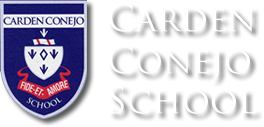Junior-Kindergarten Curriculum
Junior Kindergarten progresses at a faster pace than the usual pre-kindergarten curriculum. Children build stamina for kindergarten by enjoying a longer day that offers science enrichment and provides more time for music.
Playnames of the Letters
A “playname” is a word association for every lowercase consonant. The practice of playnames and the different steps for each playname occurs daily at the beginning of the lessons. Playnames teach letter recognition and the sounds associated with each letter, preparing children for learning to read in kindergarten.
Little Rhymes and Nursery Rhymes
“Little rhymes” are short poems for the children to recite. These rhymes are a tool for reading readiness and help develop the rhythm of reading. Nursery rhymes may be used in Circle Time as a little play or as a game, and also help develop rhythmic speech and reading readiness.
Speech Lessons
Speech lessons establish correct grammatical expressions.
Mary’s Home
The lesson of “Mary’s Home” develops vocabulary and improves powers of perception. The lesson is presented in rhyme because words are more easily recalled when grouped rhythmically.
Daddy’s Garden
The book “Daddy’s Garden” acquaints children with the vegetables, creatures and trees which make up Daddy’s Garden. Children expand their vocabulary through the incorporation of planting of their own garden.
Learning to Listen
The lesson of “Learning to Listen” develops within children the powers of accurate observation, concentration, following directions, expressing personal observations in sequential statements and speaking with an ever-increasing vocabulary.
Learning the Letters
The “Learning the Letters” lesson has children print letters, learn the sound of the letters through pictures, and strengthen fine motor skills through tracing and coloring letters.
Language of the Blocks
The “Language of the Blocks” lessons lay the groundwork for arithmetic. The lessons also help teach following directions and developing special relations such as above, across, between, bottom, below, middle and forward.
Cutting and Pasting
The book “Cutting and Pasting” contains lessons developing hand-eye coordination, fine motor skills, coloring skills and cutting skills. Learning to color from left to right is a reading-readiness skill. The book ends with lessons to develop pre-math skills.
Number Workbook for the Four’s
The “Number Workbook for the Four’s” contains lessons presenting number concepts from one through five. Through grouping, children learn the different ways the numbers one through five can be expressed.
Writing Paper for Numbers and Letters
Children practice writing the numbers one through nine and lowercase letters. The teacher makes appropriate dots on the paper and introduces each number and letter individually, with children following the teacher’s direction.
Literature
The teacher reads a page and children recall the sentences. The goals of this technique include:
- The development of perception
- The development of mental imagery
- Improvement in attention
- Growth in vocabulary
- Growth in phraseology
- The ability to tell a story in sequence
- Encouraging individual reaction to events and ideas
Art Appreciation
The teacher presents a work of art to the children and asks comprehensive questions about the work, helping establish a mental image to help children visualize the picture and recall it in detail. This process helps develop children’s power of observation.
French
Children are taught the French words for colors and shapes, as well as French games and songs, beginning the process of learning a new language.
Music
Age appropriate music will be played throughout the day.








